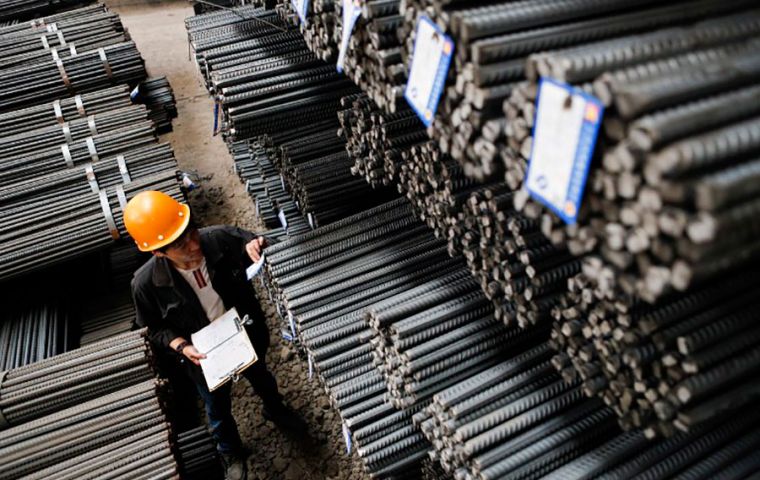MercoPress. South Atlantic News Agency
Brazilian industrial exports to neighboring South American countries booming
 Look at a South American map and you will notice Brazil has land borders with all countries with the exception of Chile and Ecuador.
Look at a South American map and you will notice Brazil has land borders with all countries with the exception of Chile and Ecuador. As the global economy recovers from the Covid 19 pandemic and its contracting influence on production and trade, Brazil's commercial relations with South American neighboring countries soared by 64,7% last year, and is expected to do even better by the end of 2022. (7,3bn)
In effect, during the first half 2022, trade with South American neighbors showed a surplus of US$ 6.2 billion, close to the whole value of 2021, some US$ 7,3bn, according to a survey by the Brazilian Foreign Trade Association (AEB) based on data from the federal government.
Last year, Brazil exported US$ 33.9bn to South American countries, and AEB projects that sales could reach US$ 41bn in 2022. If the value is confirmed, it will represent a growth of 21% compared to 2021. In the first half, it was US$ 20.3 billion.
José Augusto de Castro, AEB CEO sees the trade surplus growth with South America neighbors as an opportunity for the national industry. This issue will be one of the topics of debate at the 41st edition of the National Meeting on Foreign Trade (Enaex), organized by the entity and planned for November in virtual format.
“Brazil imports roughly 85% of the processing industry items in its market. On the other hand, in terms of exports, it ships mostly commodities, although it has a more diversified export basket to its South American neighbors,” comments Castro.
Exports to South America are mainly manufactured goods, cars, machinery and equipment, and food. In addition, imports are concentrated in raw materials – wheat from Argentina, copper from Chile, electricity from Paraguay (because of the bi-national hydroelectric plant of Itaipu), natural gas from Bolivia, rice and barley from Uruguay.
According to de Castro, the surplus is likely to be larger than in 2021 because of the projected stabilization, if not reduction, in the prices of raw commodities such as wheat and copper due to the likelihood of a worldwide recession or significant slowdown.
So far, the global economic climate, despite the imbalances produced by the pandemic and exacerbated by the Ukraine crisis, have benefited commerce with South America. Like Brazil, surrounding nations are predominantly exporters of raw commodities, which saw prices rising amid volatility since mid-2020. As a result, these neighboring nations to Brazil could purchase more manufactured items as they had more foreign exchange generated by higher export prices.
At the same time, logistical bottlenecks in international trade have raised freight costs worldwide. As a result, the geographic proximity increased the Brazilian industry’s competitive advantage as a manufactured goods supplier to South American markets. “Brazil may be more present in South America in economic terms due to geographical closeness, cheaper logistics, and the ability to export by road and, in some cases, rail to selected nations,” says de Castro.
However, the favorable situation cannot be taken for granted, cautions AEB CEO. “We must not forget that other nations are also mobilizing themselves,” de Castro points out.
“China has already surpassed Brazil as Argentina’s primary supplier. The same thing happens with Chile. China is considerably more present in Chile than Brazil, despite this has long been Brazil’s captive market,” he argues.
Uruguay is also negotiating a free trade agreement with Beijing, despite some discrepancies inside Mercosur.




Top Comments
Disclaimer & comment rulesCommenting for this story is now closed.
If you have a Facebook account, become a fan and comment on our Facebook Page!